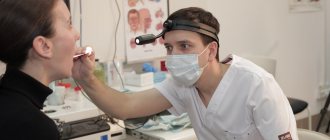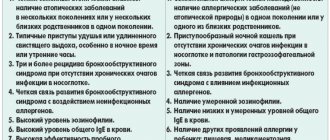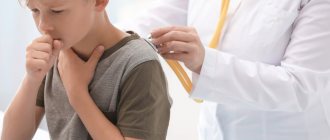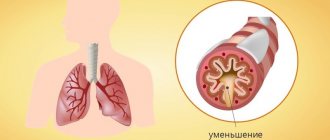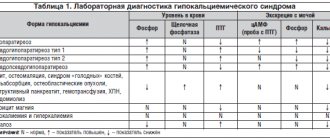Causes of whooping cough
Whooping cough is transmitted by airborne droplets. The incubation period ranges from 3 to 14 days (usually 5-7 days). The causative agent of whooping cough quickly dies in the external environment. Therefore, for example, for the room where the patient was, no special treatment is required - it is enough to ventilate it properly, and simply wash the dishes and toys with soap.
However, whooping cough is a highly contagious disease. When in contact with a sick person (a distance of 2 meters is considered critical), the probability of becoming infected is very high (more than 70%). The smallest particles of mucus that carry the infection fly out when the child coughs, talks, or cries and enters the respiratory system with the air.
The prevalence of whooping cough is also facilitated by the fact that the disease often occurs in a blurred form. In a similar way, whooping cough occurs in adults or against the background of vaccination. An infection that causes a habitual and harmless cough in an adult, if transmitted to a child who does not have immunity to whooping cough, can cause a typical form of the disease in him. Even a newborn can get sick, since antibodies to the causative agent of whooping cough are not transmitted from mother to child.
The patient is contagious from the 1st to the 25th day of illness. However, with timely treatment, the duration of the infectious period can be reduced.
Why and when is quarantine declared for whooping cough?
According to SanPiN 3.3686-21, measures to prevent the spread of infection can be applied to the following persons:
- children studying and living in educational institutions with 24-hour presence;
- children from orphanages;
- hostel guests;
- infants under 1 year of age with confirmed whooping cough;
- all patients, regardless of age, who are in maternity hospitals, orphanages, preschool and general education institutions, educational organizations, children's camps and sanatoriums;
- adults with a confirmed diagnosis of whooping cough who do not work in the organizations specified in the previous paragraph.
According to SanPiN 3.3686-21, quarantine for whooping cough can be introduced in the following places:
- children's hospitals;
- maternity hospitals;
- children's home;
- preschool institutions;
- schools;
- educational institutions;
- children's camps and sanatoriums;
- orphanages;
- other organizations where cases of infection have been identified.
Clause 43 of SanPiN 3.3686-21 specifies the reasons for establishing restrictive measures in case of an infectious disease. Among them: rapid spread of the disease among the population, severe course, and high mortality.
Whooping cough symptoms
The onset of the disease resembles a common acute respiratory infection: the temperature rises slightly, nasal discharge appears, and a rare dry cough. Subsequently, the cough intensifies, becoming spasmodic in nature.
Runny nose
Whooping cough usually begins with the appearance of mucous discharge from the nose. They may appear even before the temperature rises. The child begins to sneeze and cough.
More about the symptom
Temperature
At the onset of the disease, as a rule, there is a slight increase in temperature - up to 37-37.5 ° C.
More about the symptom
Cough
At the first stage of the disease, the cough is dry and rare. Traditional methods of treating cough for whooping cough for ARVI do not help, the cough gradually intensifies. After 10-14 days from the onset of the disease, spasmodic coughing attacks typical of whooping cough are observed.
Such an attack looks like a series of coughing shocks, followed by a deep wheezing breath. Then - new coughing tremors. This cycle can be repeated several times (from 2 to 15 - depending on the severity of the disease). The cough is not easy; The child’s face may turn blue and the neck veins may swell. He sticks out his tongue; this may cause injury to the frenulum of the tongue. Infants may stop breathing. The attack ends with the release of a small amount of glassy sputum or vomiting. The number of such attacks can reach up to 50 per day.
The period of spasmodic cough lasts 3-4 weeks. After this, the cough (already normal, not spasmodic) persists for another 2-3 weeks.
More about the symptom
FAQ
What are the stages of whooping cough?
Three stages of whooping cough:
- First stage.
Symptoms similar to a cold.
- Second stage.
Paroxysmal barking cough and other symptoms such as vomiting and exhaustion.
- Third stage.
Slow recovery, less frequent and severe cough.
How do the first signs of whooping cough appear?
- The first symptoms of whooping cough include:
- runny nose,
- elevated temperature,
- periodic cough, worse at night, reminiscent of barking.
How can you be sure that your child definitely has whooping cough?
To know for sure that it is whooping cough, show your child to the doctor. The doctor will take a nasal swab and send the sample to a laboratory to be tested for pertussis bacteria.
Is whooping cough dangerous?
Yes. Whooping cough is a serious illness for children, adolescents and adults, but it is most dangerous for babies under 6 months of age.
Treatment methods for whooping cough
The causative agent of whooping cough is sensitive to antibiotics only at the beginning of the disease (before the period of spasmodic cough). If the disease has already entered this phase, treatment is aimed mainly at reducing the frequency and severity of attacks. To do this, if possible, eliminate the influence of irritating agents that cause coughing. The child needs to spend more time in the fresh air and be in a ventilated area. It is also important to relieve the allergic reaction caused by toxins produced by the causative bacteria.
The younger the sick child, the more severe the disease. Even death is possible. Therefore, it is very important to protect your child by vaccinating him against whooping cough. Even if the vaccinated child subsequently gets sick (there is such a possibility), his disease will proceed in a smoothed form, without painful spasmodic attacks.
Drug treatment
Antibiotics kill the causative agent of whooping cough. However, as a rule, this occurs relatively late, since whooping cough is often not recognized at the onset of the disease. By the time antibiotics are used, the pathogen usually already affects the cough receptors in the brain. Therefore, the cough continues even after the destruction of the whooping cough bacillus.
Expectorants, antihistamines, sedatives and other drugs can also be used in the treatment of whooping cough. Their action is aimed at preventing possible complications, but they cannot speed up relief from cough.
Vaccination
Vaccination against whooping cough is included in the National and Regional calendars of preventive vaccinations; immunization of children begins at 3 months of age and consists of several sequential vaccinations. By contacting Family Doctor JSC about immunization against whooping cough, you guarantee that the vaccine will be of adequate quality, and the actions of medical personnel will be professional and qualified.
You should consult a pediatrician about vaccinating your child against whooping cough.
More information about the treatment method
Make an appointment Do not self-medicate. Contact our specialists who will correctly diagnose and prescribe treatment.
Rate how useful the material was
thank you for rating
Rare side effects of whooping cough vaccine
There are almost no side effects when administering the whooping cough vaccine. In extremely rare cases, mild side effects are possible. This includes fever, vomiting, redness, swelling, or tenderness where the needle enters. Even less common are more serious side effects, such as a temperature above 40.5 ° C, crying for several hours, and behavioral disturbances. If your child experiences any of the above side effects after vaccination, contact your doctor immediately.
Whooping cough in vaccinated children
Whooping cough in vaccinated children has its own characteristics. The incidence of children vaccinated against whooping cough is 4-6 times lower than among unvaccinated children. The cause of morbidity in vaccinated children is insufficient development of immunity. This is confirmed by the fact that vaccinated children are more likely to develop whooping cough 3 years after vaccination.
- In vaccinated children, whooping cough often occurs in a mild or erased form (about 40%). The remaining cases are of moderate severity. Severe cases of whooping cough are not recorded in vaccinated children.
- In vaccinated children, the incubation and catarrhal periods of whooping cough are lengthened, and the period of convulsive cough is shortened and amounts to no more than 2 weeks.
- Repetitions and vomiting after a coughing attack are recorded extremely rarely.
- Hemorrhages and edematous syndromes occur in no more than 0.4% of cases.
- Hematological abnormalities are minor. Sometimes “isolated” lymphocytosis is recorded.
- Complications of whooping cough are rare and do not pose a threat to the child’s life.
- Whooping cough in vaccinated children is never fatal.
Rice. 12. Periodic attacks of convulsive cough and the duration of the disease lead to despair of parents.
Prevention
The best means of prevention in case of infectious diseases is vaccination. Antibodies produced by the body facilitate the course of the disease and also significantly reduce the likelihood of infection. In the Russian Federation, vaccination against whooping cough is mandatory in accordance with the National Calendar of Preventive Vaccinations. This vaccination is routine and is carried out in several stages: at the age of 3, 4.5 and 6 months. Revaccination is carried out at 1.5 years. It is what contributes to the development of longer-lasting immunity. Vaccinated people suffer from whooping cough with virtually no symptoms, or whooping cough may occur with a mild cough and runny nose.
Vaccines containing the pertussis component are: DTP (whole cell killed pathogen), Infanrix, Infanrix Hexa, Pentaxim (split components of the killed pathogen). According to the results of recent studies, post-vaccination immunity, even taking into account timely revaccination, inevitably fades by adolescence. Therefore, although older children and adults tolerate the disease much more easily, it is recommended to routinely carry out revaccinations against whooping cough as part of the combined Adasel vaccine (against whooping cough, diphtheria and tetanus), which is used from 4 years of age and older.
Vaccinated people experience whooping cough asymptomatically, but during the acute period they are a source of infection.
Complications
Whooping cough is very dangerous due to its complications, which can cause serious harm to health.
Complications of whooping cough:
- pneumothorax;
- emphysema;
- pneumonia;
- respiratory tract diseases (bronchitis, tracheitis);
- umbilical hernia;
- epilepsy;
- rib fracture;
- inguinal hernia;
- lung collapse;
- damage to eardrums and hearing impairment;
- cerebral hemorrhage;
- oxygen starvation of the brain and neurological disorders;
- nosebleeds;
- sinusitis, otitis media
To prevent serious consequences, the patient is admitted to the hospital and left under the supervision of doctors. It is necessary to take all medications and follow all doctor's orders.
Sick leave during quarantine due to whooping cough epidemic
Clause 48 of the Order of the Ministry of Health dated September 1, 2020 No. 925-states that during quarantine for whooping cough, citizens are issued sick leaves. They are prepared not only by infectious disease doctors, but also by paramedics. The sick leave is valid for the entire period of isolation of the person who has been suspended from work.
A certificate of incapacity for work during quarantine is issued to parents who have children under 7 years of age in their family. At the same time, it is not possible to issue sick leave during restrictive measures to those parents who have children over 7 years old.
In a situation where a doctor refuses to issue a certificate of incapacity for work due to quarantine for whooping cough, you must contact a higher authority. For local clinics this is the Department of Health. If this body refuses to resolve the issue, then you should contact the territorial division of Roszdravnadzor with a complaint about the unlawful refusal.
Contents of quarantine measures for whooping cough
According to SanPiN 3.3686-21, when introducing quarantine for whooping cough due to the spread of infection, the following rules are established:
- referral of all children who have been coughing for seven days or more, and adults working with children, for bacteriological (twice) and molecular genetic (once) examination;
- establishing medical supervision of all children who cough for more than 7 days;
- hospitalization of all children under 6 months with signs of whooping cough;
- hospitalization of children older than six months and adults with severe illness;
- referral to a medical institution of children with manifestations of infection who live around the clock in educational organizations and orphanages;
- hospitalization of all patients with clinical manifestations living in dormitories;
- isolation of all persons with a confirmed diagnosis for 25 days;
- placement of children under 1 year of age in isolated medical boxes, and children over 1 year of age are quarantined in small rooms separately from other patients;
- temporary suspension from work of adults with whooping cough who are not working in educational institutions.
According to SanPiN 3.3686-21, specialists working in local executive authorities and dealing with sanitary surveillance issues are required to establish an epidemiological focus and conduct an investigation into it within 24 hours after receiving notification of a whooping cough outbreak.
In all places where cases of the disease have been identified, wet cleaning is carried out daily using approved disinfectants. Regular ventilation of premises is also recommended (SP 3.3686-21).
What do parents need to know when quarantining for whooping cough in a preschool educational institution?
A special employee informs parents about the introduction of restrictive measures in the preschool educational institution. He is appointed by the kindergarten management. The employee’s responsibilities include notifying all parents about the whooping cough quarantine introduced on the territory of the preschool educational institution. The head of a kindergarten issues an urgent order after the first reported case of whooping cough among children. On the same day, he or his designated employee must notify parents of the restrictive measures introduced.
Full responsibility for the implementation of sanitary rules (including during quarantine) lies with the head of the preschool organization.
Restrictive measures for whooping cough in preschool educational institutions are as follows:
- suspending all employees with signs of infection and placing them in 25-day isolation;
- cancellation of all activities in kindergarten;
- mandatory frequent disinfection of premises;
- daily examination of all children by preschool medical workers and recording information about their condition in a journal;
- strengthening hygiene measures in kindergarten, monitoring this by teachers.
During quarantine due to whooping cough in a preschool educational institution, a requirement is established for separate walks for children for the entire period of its validity.
Quarantine for whooping cough in kindergarten
The preschool institution provides the following rules for restrictive measures during quarantine for whooping cough:
- complete suspension from attending kindergarten until the preschooler passes three negative tests;
- 25 days of quarantine at home with mandatory 14-day medical supervision of family members;
- frequent disinfection of all premises of the institution;
Pupils in orphanages and children attending preschool educational institutions, if repeated cases of infection are detected, are subject to 21-day medical observation. This period is calculated from the moment the last patient was isolated.
Forms of the disease
Whooping cough can manifest itself in one of several common forms. An accurate diagnosis is made after laboratory analysis.
Forms of whooping cough:
- typical - the patient exhibits all the characteristic symptoms;
- erased (atypical) - there are no severe coughing attacks;
- carriage - there are no symptoms, but the patient is contagious to others.
Anyone infected with whooping cough must isolate from other people for 30 days. This applies not only to patients, but also to carriers of the infection, because they can infect other people with weak immune systems.
If the disease is mild, then the patient experiences 10–15 coughing attacks per day. With moderate severity, the frequency of attacks is 15–15. The severe form manifests itself in the form of 30–60 attacks per day. During this time, the patient's temperature may rise.
Diagnostics
Most often, the initial symptoms of whooping cough are mistaken for manifestations of ARVI or a cold. Only bouts of prolonged coughing force one to consult a specialist. Whooping cough in adults is diagnosed by a general practitioner, and in children by a pediatrician. Analysis of mucus from the throat and nasopharynx (bacteriological culture or detection of bacterial DNA) helps to accurately determine the causative agent of the disease. A general blood test determines the degree of inflammation and the likelihood of complications. It is also possible to determine the severity of the immune response (antibodies) at different stages of the disease.
Nuances
During quarantine for whooping cough, vaccination is not carried out. Due to the high susceptibility of newborns to infection, immunoglobulin administration is indicated. The vaccination is done in maternity hospitals. Vaccination is also carried out in the first three months of a newborn’s life. The vaccine is also given to unvaccinated children whose age does not exceed one year. In all cases, the administration of immunoglobulin is indicated in cases where the newborn has been in contact with a sick person. Vaccination of children is carried out only with the prior consent of their parents.
Comments Showing 0 of 0
Whooping cough, history of the study of the disease
Doctors have known whooping cough for a long time. For the first time, a disease accompanied by symptoms of convulsive cough was described in the 16th century during an epidemic of this disease in Paris. In 1847, a description of whooping cough was compiled by the Russian scientist Stepan Fomich Khotovitsky.
The undeservedly forgotten founder of the science of childhood diseases in Russia and the author of the first Russian textbook on Pediatrics S.F. Khotovitsky divided his childhood into three periods. According to Khotovitsky’s classification, diseases of the “second period of childhood” included: “inflammatory suffering of the brain, larynx, lungs, peritoneum, intestines, spinal cord, whooping cough.”
So, we see that already in the 19th century, pediatricians considered whooping cough as a serious disease of early and middle childhood.
